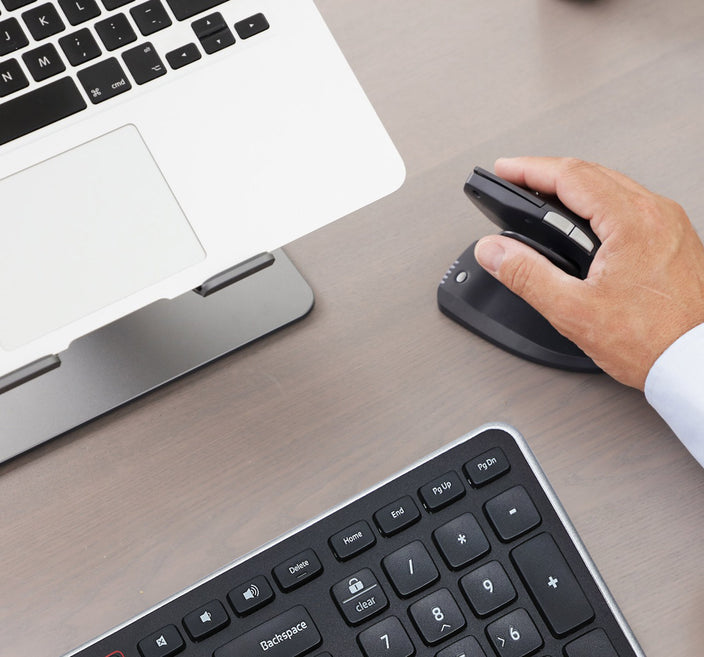At this point, we are all familiar with a vertical mouse, right?
The design has been around since the early '90s and has seen a rise in popularity over the years. Now, every online retailer is flooded with vertical mice of different styles, colours, and shapes.
The concept is simple: Take a traditional handheld mouse and design it, so you rotate your hand into a "handshake"-like grip rather than a posture that is flat on the desk.
Then, all your ailments should suddenly have gotten better. But is it that simple? Let us investigate how vertical mice work and whether they are the best long-term solution for mouse-related RSIs.
The vertical position as a starting point
All vertical-style mice operate under the same basic principle when it comes to relieving wrist and forearm pain. Rotate your hand to a vertical position to eliminate over-pronation of the wrist while using a different muscle group in the forearm.
While each mouse may make a case as to why its angle or posture rotation is better than the competitions, the fact remains that the angle always stays the same no matter what. In the long run, that causes problems.
What physiotherapist Stuart Nottingham has to say about Unimouse
The definition of "static" is: lacking in movement, action, or change.
Vertical mice are "static grip" mice that, by definition, cannot vary or provide a dynamic posture. As already noted, this is not a good thing. It is true, the reason behind most mouse-related RSIs is the posture a standard computer mouse puts you in. It is also true that changing your grip to a more vertical posture alleviates the immediate issues caused by traditional mice.
All in all, this is great. However, we must wonder if going from one static posture to another is not just resetting the timer on the possibility of another RSI?
Can a vertical mouse quick fix your RSI?
One constant in our workday is how much we rely on the computer, and our input devices, to complete tasks. That workload will not decrease any time soon.
Continuing down that line of thought, is a static, vertical posture the answer to all mouse-related RSIs? That will be a resounding "NO". A vertical mouse may have fixed the immediate issue, but offloading the same workload to a different set of muscles day in, day out leaves workers susceptible to various other mouse-related RSIs.
Forearms can be overworked as they are the driving force behind all the movements. Not only that, thumbs are at risk too! The vertical mouse design inherently creates a pinch point between the thumb and forefinger, especially noticeable when left-clicking. This can overwork the CMC joint and cause fatigue and pain in the thumb.
Static vs variable posture
So how can you fix one problem without creating another?
The answer is simple: variable posture. Think about it like a height-adjustable desk for your hand! The Contour Design Unimouse is designed to help you find your preferred posture and encourages users to vary their posture throughout the day. This concept allows users to switch the angle and thumb rest position for the mouse on the fly, allowing for a relaxed hand while continually using different muscle groups to "drive" the mouse.
So would you like to be stuck in the same posture day in and day out, or would you prefer to have a mouse that gives you numerous options that ensure you do not feel fatigued or pain?
The choice is yours.



